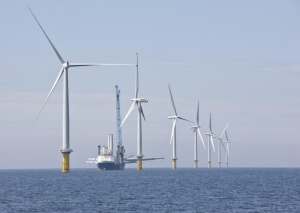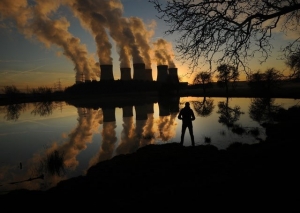How Hull and Humber will power green energy revolution – Kwasi Kwarteng
How Hull and Humber will power green energy revolution – Kwasi Kwarteng
THE docks and quaysides of Yorkshire’s east coast have adapted to many changes over the years from the Humber’s historic fish trade to its industrial-era boom, and as a hub of post-war scientific excellence, the East Riding has never shied from putting innovation at the heart of its economy.
Wednesday, 5th August 2020, 5:53 am
Siemens and offshore wind are powering a green energy revolution off the East Riding and Hull coast.
Over the past decade, a new British staple has been built out of the Humber – renewable energy. As an established renewable and industrial heartland, the Humber is the backbone for our green transition and an example to the many other industrial centres across the UK that they can go green: a crucial message for our economic recovery from coronavirus.
Tomorrow, I’ll be visiting the Siemens Gamesa blade factory in Hull, seeing first-hand how this spirit of innovation continues to drive forward the economic future of this proud region.
Since its opening in 2015, the factory has supplied thousands of blades for offshore wind projects, employing hundreds of people to export our renewable expertise to the world.
Kwasi Kwarteng is Minister for Energy and Clean Growth. He is visiting the East Riding this week.
With this kind of output, we have been able to build the world’s largest offshore wind farm, Hornsea Project One – and Project Two will overtake it when it is finished in 2023. More than that, this spirit of innovation is setting the whole of the UK on its future path as a truly global leader in offshore wind and renewable energy.
Westermost Rough was the first wind farm to use 6MW turbines, Race Bank and Dudgeon followed suit – all built out of the Humber, creating thousands of jobs and supporting British businesses to help construction and operations.
The 1.6GW of offshore wind off Yorkshire produces enough green energy to power over one million homes, with a further 6.4GW yet to be built. Offshore wind has become a crucial part of this country’s energy mix and will only get stronger in the years to come.
Not only are we supporting this emerging industry to grow, we are also working hard to build on the expertise and infrastructure that we already have in place in pre-existing industries. I’ll also be visiting Centrica’s Rough gas platform off the coast of Hull – the site’s newly developed technologies for harnessing cleaner energy are another fantastic example of innovation in the sector, and how we can look to repurpose offshore structures in the future to better connect with our onshore grid.
Drax power station is at the heart of the Government’s decarbonisation plans. Photo: Simon Hulme.
It’s not all about just our offshore wind industry though. Government support schemes are driving the development of other new technologies, not least of all the way in which we make industrial processes less carbon-emitting – an area of innovation known as “decarbonisation”. Yorkshire is ahead of the curve when it comes to decarbonisation, with a skilled workforce ready to meet the challenge of reimagining historic industrial processes to suit the low carbon needs of our future.
Our transformation is clear in the work already under way across the county. At Drax power station, bioenergy with carbon capture and storage is being trialled to deliver negative emissions and we’re now in a position where we could possibly see the world’s first carbon negative power station this decade, right here in Yorkshire.
Hydrogen is another part of the renewables mix that has limitless potential, with the ability to power transport, heat homes and crucially cut emissions in industrial processes. That is why earlier this year we invested over £90m in the development and introduction of hydrogen energy to such industries as glass and cement that are essential to Yorkshire’s economy.
In Saltend we are already seeing renewable energy and heavy industry sit side by side, as a large-scale hydrogen demonstrator project takes shape amongst existing power plants. With the aim to produce clean hydrogen at scale by 2026, the project will lead the way for the rest of the UK’s manufacturing sites in cutting emissions.
Companies are also coming together as part of the Zero Carbon Humber project, exploring the preservation of the Humber’s rich industrial heritage while setting its course to become the first zero carbon industrial centre in the UK. We are investing £300m in projects like these: what we build in the Humber should improve what already exists, rather than replace it.
There are those who argue that a green recovery is not compatible with protecting and creating jobs against the backdrop of the coronavirus pandemic; that we must forgo our climate change ambition if we are to recover fully. The opposite is true.
Creating a clean, green low-carbon economy will spark the resurgence of our industries, create new skilled jobs, and see the UK continue its trajectory as a world leader in the international fight against climate change. This resurgence begins with the Humber.
Kwasi Kwarteng is Minister for Energy and Clean Growth. He is a Conservative MP.
Article appeared in the Yorkshire Post – 5 August 2020


